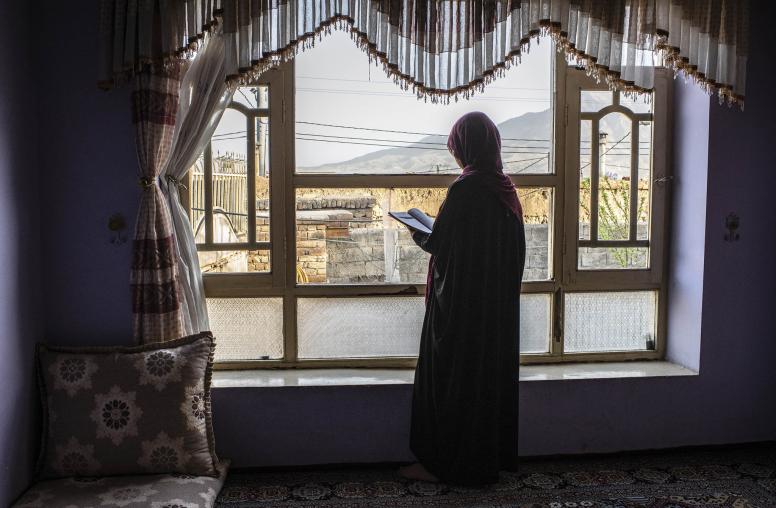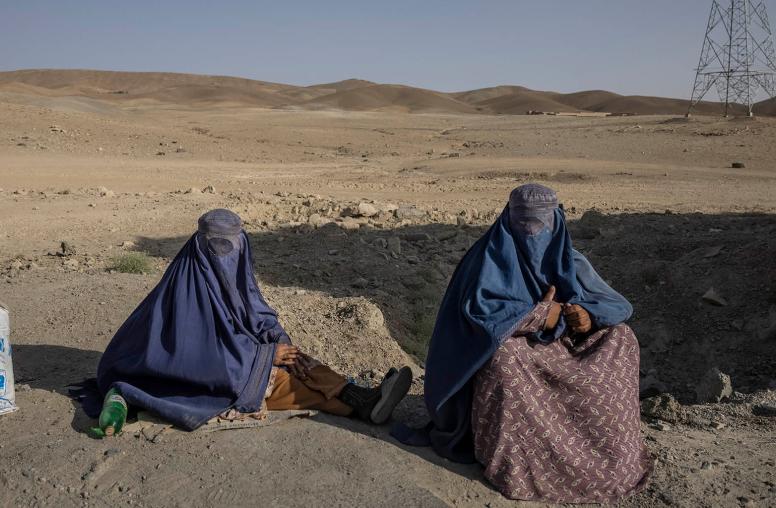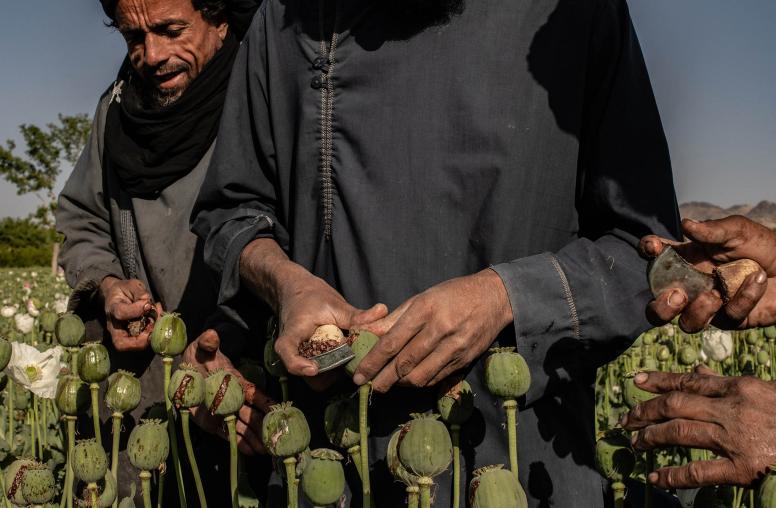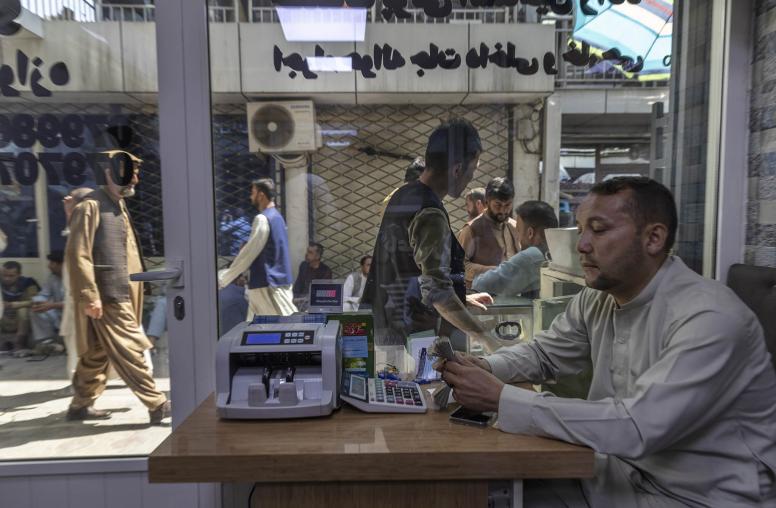Afghanistan Aid Conference Yields Mixed Results
A meeting shadowed by donor fatigue, the U.S. troop drawdown and increased fighting still left room for hope.
The quadrennial international donor conference for Afghanistan, held virtually late last month from Geneva, was largely shaped by the pitfalls and roadblocks forecast months ago when the event was publicly announced. Delays in the peace process, worsening violence, and unveiling of plans for further U.S. troop reductions left the meeting’s potential unmet. Yet amid the unsatisfying results, some hopeful rays broke through. In particular, the size and duration of aid pledges provided at least something to build on.

What Went Well
First, the good news.
The Geneva meeting, held November 23-24, was seen in advance as a bold initiative to inject a medium-term development perspective that would cover the years 2021 through 2024. Four-year aid pledges were the norm at previous quadrennial meetings, and that time frame was seen as partly offsetting the short-termism pervading U.S. troop withdrawals, peace negotiations, and Afghan politics. The conference was also viewed as an opportunity for donors to make clear to the government and, indirectly, to the Taliban, key values that would determine future civilian aid. It was hoped the conference could thereby provide an incentive to preserve economic development and human rights gains during the peace negotiations.
The Afghanistan Partnership Framework (APF), an agreement between donors and the Afghan government, spelled out those expectations. Its principles encompass democracy, free and fair elections, implementation of freedoms embedded in Afghanistan’s constitution, rule of law, human rights, gender equality, and commitment to an inclusive Afghan-owned and led peace process. Reform priorities include good governance and quality services for all citizens; carrying out a meaningful, demonstrable fight against corruption; and continued commitment by the government to sound macroeconomic policies and public financial management.
These principles may not have much impact on the Taliban, however. They will likely reject the assumption that the current government, referred to as the Islamic Republic of Afghanistan in the conference communique, will remain in place to execute multi-year commitments even though a successful peace process can only emerge from difficult compromises that enhance the group’s power. The “red lines” put forward in the APF may at some point force donors to choose between stopping aid in support of their principles—thereby putting peace at risk—or retreating from their current stance.
In the APF and in a separate document, donor countries emphasized the need to preserve gains especially in human and gender rights, while pushing both sides to make progress in the peace talks. Donors again pressed forcefully for improved governance and stronger anti-corruption efforts. The APF lays out an annual review process for evaluating performance against targets and determining aid levels and conditions during 2022-2024.
The government’s overall conceptual framework of peace building, state building, and market building—articulated in its revised Afghanistan National Peace and Development Framework (ANPDF-II) and replicated in the APF—is in line with sound development thinking and practice.
Aid Pledges
The outcome of Geneva in terms of aid pledges was mixed but far from a worst-case scenario.
The aggregate 2021 pledge of $3.3 billion is 13 percent less than the yearly average of $3.8 billion for 2016-2020—not a precipitous decline though Afghanistan’s underlying development needs have increased with population and labor force growth, the stagnating economy, and the COVID-19 pandemic. The U.S. 2021 pledge of $600 million (half conditional on progress in the peace talks) represents a 25 percent cut. The U.S. noted, “Future assistance beyond 2021 is planned at comparable levels provided there is consistent progress on transparency and accountability, as well as on the peace process, on the part of the Afghan government.”
In contrast, the European Union sent a strong positive signal, pledging a total of 1.2 billion Euros (USD $1.4 billion) covering the entire 2021-2024 period, the same as the EU had pledged four years ago at the Brussels conference. Some international agencies and other donors also made four-year pledges, a positive development since the conference-wide minimum pledging period of just a year risked exacerbating short-termism.
The Finnish press release stated, “annual commitments [are] expected to stay at the same level year-on-year,” though only one-year pledges were collated and aggregated.
At least the mixed signals on aid pledges provided no fodder for the widespread and deeply felt abandonment narrative circulating among many Afghans.
What Went Poorly
In other respects, Geneva fell short of earlier hopes and likely will give rise to future complications. Conditioning aid on values-based principles—which the current Afghan government eagerly endorsed — may wrongly lend the impression that the administration doesn’t have to compromise with the Taliban on those points.
The APF’s targets are streamlined compared to past mutual accountability frameworks (MAFs), and its terms are mostly specific and measurable. However, the agreement doubles down on traditional and less effective approaches embodied in past MAFs, and several of its targets have been on the reform agenda for years or even decades. There is no reason to believe that now, in a deteriorating situation, that they will finally be achieved.
A focus on codification of policies, laws, and regulations continues in a country where rule of law is widely observed in the breach, as well as on training government officials, which has had decidedly mixed results in Afghanistan. Some benchmarks are largely irrelevant to achieving real progress. And while the medium-term development framework put forward at Geneva is laudable, Afghanistan does not have the luxury of time for long-gestation reforms and investments.
Examples include:
- Value-added tax, an item on the reform agenda going back a decade, with limited progress: It would have been better to target much needed improvements in the Finance Ministry.
- Extractive Industries Transparency Initiative (EITI): Afghanistan became a candidate EITI member in 2010, was suspended in 2017, and restored in October 2020, but EITI has not helped address informal/illegal mining or take forward major projects. Disarray in the Ministry of Mines and political interference would be better targets for action.
- Independent anti-corruption commission: On the reform agenda for several years in its present incarnation and from the mid-2000s in earlier guises.
- Restructuring and merging public sector banks: A 2024 target—which partly stems from the Kabul Bank crisis of 2010. More generally it has been on the financial sector reform agenda since 2003.
The APF, while enshrining key principles and imposing an annual review process, missed the opportunity to institute real change by specifying actions that would achieve real progress and thereby merit support. At this crucial moment, innovation based on lessons learned was called for, but that didn’t happen.
Finance Ministry
On the Afghan government side, organizational problems and staffing instability at the Ministry of Finance constitute a serious self-inflicted wound, undermining the credibility of requests for continuation of on-budget assistance. In this regard, it is striking that neither the APF nor the communique note that maintaining donor assistance to the Afghan budget is essential for government functioning and economic development. Similar issues plague other ministries, and the long delay in forming the cabinet did not help, though recent confirmations of nearly 20 ministers by the Afghan parliament represented very belated progress.
Unexpected developments also worsened the headwinds for Geneva. Though the Doha peace talks were expected to progress toward a peace settlement only slowly, there was hope that negotiations would get to substantive issues by the time of the meeting. Protracted disagreements over procedural issues, however, weakened any forward momentum prior to Geneva, though the agreement on procedural rules reported on December 2 suggested that the talks may now finally shift to substance.
Moreover, with attacks occurring around the country, hopes have been dashed that peace talks would be accompanied by less violence. Geneva statements and documents included strong demands for a cease-fire, but it is doubtful the Taliban will drop their resistance to one without winning further concessions on other issues.
The Trump administration’s November 17 announcement of a further U.S. troop drawdown to 2,500 by January 2021, in the absence of progress in the peace negotiations, inevitably cast a shadow over Geneva. This followed earlier waves of U.S. troop withdrawals and further accentuated the need for Geneva to offset fears about the longevity of the international commitment to Afghanistan.
The Way Forward
Moving ahead in the wake of Geneva will require building on the achievements of the conference while addressing its shortcomings.
The annual review of Afghanistan’s compliance with APF principles and its progress toward specific goals provides an opportunity to make course corrections. A good starting point would be to revisit the existing targets in the APF and make them more relevant for achieving real progress in areas like governance and anti-corruption.
A key ingredient would involve strengthening the Ministry of Finance and improving other core institutions and programs based on past experience of what makes them work—competent, empowered Afghan management teams with a degree of political insulation and containment of corruption.
Revisiting the APF principles so strongly advocated by donors will be challenging. But reassessing them against the backdrop of advancing peace talks and the difficult compromises the talks may require could well be a needed step toward building a sustainable peace.



